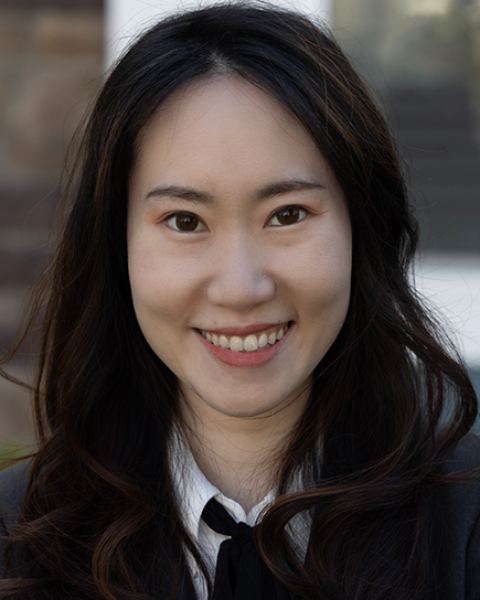PQA 07 - PQA 07 Gastrointestinal Cancer and Sarcoma/Cutaneous Tumors Poster Q&A
3077 - Enhancing Radiotherapy Response via Intratumoral Injection of the TLR9 Agonist CpG to Stimulate CD8 T Cells in an Autochthonous Mouse Model of Sarcoma
Tuesday, October 1, 2024
12:45 PM - 2:00 PM ET
Location: Hall C
Screen: 33

Chang Su, BS
Duke University
Durham, NC
Presenter(s)
C. Su1, C. L. Kent1, M. Pierpoint2, W. Floyd3, L. Luo4, N. T. Williams4, B. Peng5, A. Subramanian6, J. Himes5, V. Perez7, J. Modliszewski8, M. L. Shinohara1, A. J. Wisdom9, E. J. Moding10, Y. M. Mowery11, and D. G. Kirsch12; 1Duke University School of Medicine, Durham, NC, 2University of Toronto, Toronto, ON, Canada, 3Department of Radiation Oncology, MD Anderson Cancer Center, Houston, TX, 4Duke University Medical Center, Durham, NC, 5Duke University, Durham, NC, 6Stanford University, Stanford, CA, 7Tempus, Durham, NC, 8UNC Chapel Hill, Chapel Hill, NC, 9Massachusetts General Hospital, Harvard Medical School, Boston, MA, 10Department of Radiation Oncology, Stanford University School of Medicine, Stanford, CA, 11Department of Radiation Oncology, UPMC Hillman Cancer Center, University of Pittsburgh School of Medicine, Pittsburgh, PA, 12Radiation Medicine Program, Princess Margaret Cancer Centre, University Health Network, Toronto, ON, Canada
Purpose/Objective(s): Activating the immune system has the potential to improve tumor response to radiation therapy (RT). Using an autochthonous mouse model of soft tissue sarcoma (STS), we observed that intratumoral injection of the TLR9 agonist CpG enhanced tumor growth delay after a single fraction of 20 Gy. We hypothesize that radiotherapy induces immunogenic cell death that releases tumor antigens, and CpG activates myeloid cells, which together lead to increased tumor antigen cross-presentation and activation of cytotoxic T cells. Materials/
Methods: We used CRISPR/Cas9 and the chemical carcinogen 3-methylcholanthrene (MCA) to generate autochthonous STS with high tumor mutation burdens. After tumor development, mice were randomized to receive 0 or 20 Gy (Day 0) and vehicle control or CpG (Day 3 and Day 10) when tumors reached 70-150 mm3. For intratumoral immune microenvironment analysis, once tumors reached 300 mm3, mice were randomized to receive 0 or 20 Gy (Day 0) and vehicle control or CpG (Day 3). Tumors were harvested on Day 6 for bulk RNA seq, single-cell RNA seq, and mass cytometry analysis to study the mechanism by which CpG-ODN enhanced tumor response to radiotherapy.
Results: In vivo tumor growth delay studies demonstrated that CpG + RT combination treatment significantly delayed tumor growth rate compared to other groups, and this treatment effect was negated with lymphocytes (Rag2yc DKO), CD8, or TLR9 depletion. Bulk RNA seq, single-cell RNA seq, and mass cytometry showed that compared to tumors that received no treatment, CpG-ODN alone, or RT alone, autochthonous sarcomas treated with 20 Gy and CpG demonstrated increased CD8 T cells expressing markers associated with activation and proliferation, such as Granzyme B, Ki-67, and interferon-?. CpG + RT also upregulated antigen presentation pathways on myeloid cells. CellChat analysis revealed significantly strengthened cellular communications associated with antigen presentation and T cells trafficking after combination therapy. Furthermore, in sarcomas treated with CpG + RT, TCR clonality analysis suggests an expansion of tumor-antigen-specific T cells.
Conclusion: In a primary mouse model of STS, RT + CpG significantly delays tumor growth in a CD8 T cell-dependent manner. The positive treatment outcome data collected in a mouse model with an intact immune system that coevolves with the cancer cells provide a strong rationale for clinical trials evaluating CpG or other TLR9 agonists with RT in patients with soft tissue sarcoma.
Purpose/Objective(s): Activating the immune system has the potential to improve tumor response to radiation therapy (RT). Using an autochthonous mouse model of soft tissue sarcoma (STS), we observed that intratumoral injection of the TLR9 agonist CpG enhanced tumor growth delay after a single fraction of 20 Gy. We hypothesize that radiotherapy induces immunogenic cell death that releases tumor antigens, and CpG activates myeloid cells, which together lead to increased tumor antigen cross-presentation and activation of cytotoxic T cells. Materials/
Methods: We used CRISPR/Cas9 and the chemical carcinogen 3-methylcholanthrene (MCA) to generate autochthonous STS with high tumor mutation burdens. After tumor development, mice were randomized to receive 0 or 20 Gy (Day 0) and vehicle control or CpG (Day 3 and Day 10) when tumors reached 70-150 mm3. For intratumoral immune microenvironment analysis, once tumors reached 300 mm3, mice were randomized to receive 0 or 20 Gy (Day 0) and vehicle control or CpG (Day 3). Tumors were harvested on Day 6 for bulk RNA seq, single-cell RNA seq, and mass cytometry analysis to study the mechanism by which CpG-ODN enhanced tumor response to radiotherapy.
Results: In vivo tumor growth delay studies demonstrated that CpG + RT combination treatment significantly delayed tumor growth rate compared to other groups, and this treatment effect was negated with lymphocytes (Rag2yc DKO), CD8, or TLR9 depletion. Bulk RNA seq, single-cell RNA seq, and mass cytometry showed that compared to tumors that received no treatment, CpG-ODN alone, or RT alone, autochthonous sarcomas treated with 20 Gy and CpG demonstrated increased CD8 T cells expressing markers associated with activation and proliferation, such as Granzyme B, Ki-67, and interferon-?. CpG + RT also upregulated antigen presentation pathways on myeloid cells. CellChat analysis revealed significantly strengthened cellular communications associated with antigen presentation and T cells trafficking after combination therapy. Furthermore, in sarcomas treated with CpG + RT, TCR clonality analysis suggests an expansion of tumor-antigen-specific T cells.
Conclusion: In a primary mouse model of STS, RT + CpG significantly delays tumor growth in a CD8 T cell-dependent manner. The positive treatment outcome data collected in a mouse model with an intact immune system that coevolves with the cancer cells provide a strong rationale for clinical trials evaluating CpG or other TLR9 agonists with RT in patients with soft tissue sarcoma.
